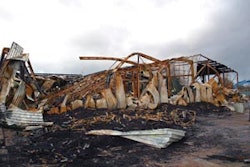I was in my hotel room following a long day at the Bauma construction trade fair in Munich, Germany, when the first reports came in about the terrorist bombings at the Boston Marathon. My thoughts immediately went out to those affected by the blasts — the families of those lost and all those whose lives will never be the same due to debilitating injuries and other trauma.
Just two days later, another tragedy struck, this time in the form of an explosion at a fertilizer plant in West, TX. While deemed an industrial accident, the effects were no less devastating, wiping out a portion of the town, with extensive loss of life, homes and livelihoods.
Such events are a grim reminder that time is short and should not be taken for granted. They are also a jarring wake-up call that an emergency situation can arise anytime and anywhere, and quick response is crucial to mitigate the repercussions.
Emergency preparedness is always a hot topic after a disaster occurs. Consider Hurricanes Sandy and Katrina. Much ado was made following the storms about how to prepare your business or home under such circumstances. Yet, clearly, the time to plan and prepare is before disaster strikes.
Given the world in which we live, it’s impossible to anticipate every type of emergency situation. Yet, it is possible to plan ahead to maximize the chances of business continuity under a variety of circumstances.
Start with a threat assessment for your business and projects. Identify the most likely risks based on the type of construction your company performs, its geographic location, weather patterns, type of equipment used, etc. Envision the possible scenarios and potential impacts, then develop a crisis management plan designed to protect your personnel and business assets.
A key element of the plan is emergency response. This includes training employees on how to react in an emergency situation, and what they should and should not do. For example, if a trench cave-in occurs, personnel should be instructed to immediately contact the appropriate emergency services and avoid attempting to enter the trench, which could end up making a bad situation worse.
Workers should be notified of the location of the nearest hospital/medical clinic and shelter (in the event of threatening weather). Designate where to meet and/or whom to contact following an emergency. This will aid in identifying any missing workers so emergency service personnel can be alerted as quickly as possible.
As part of your crisis planning, assess any steps that can be taken to minimize damage/losses of equipment or supplies (e.g., placing them on higher ground in low-lying or flood prone areas). Evaluate your insurance coverage on an annual basis to determine if it is sufficient to protect your business should a major loss occur. Consider adding business continuation insurance to assist with short-term operating needs.
Put systems in place to protect critical business data. Usable, up-to-date backups of key paper and electronic files should be secured at a safe, off-site location. Consider taking advantage of cloud computing as a means to store critical data online via a secure website.
If a disaster strikes a key supplier, it could interrupt shipments of materials needed to complete a project. Check to make sure there are other sources available that can supply the necessary materials to keep jobs going.
For more information on how to prepare your business against disaster, visit the U.S. Small Business Administration web site at www.sba.gov/prepare.




















